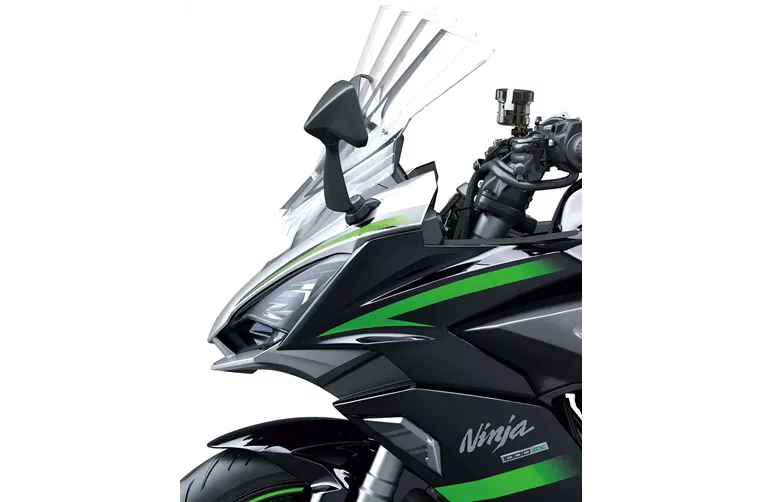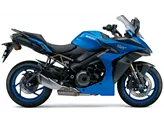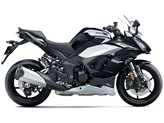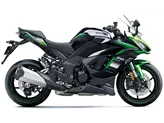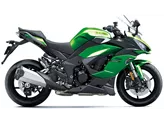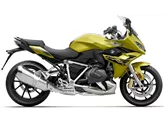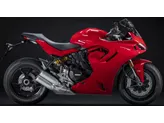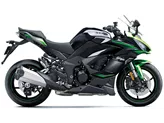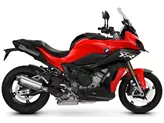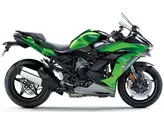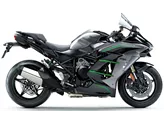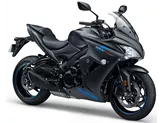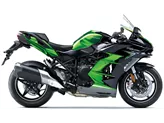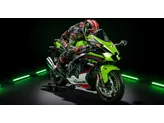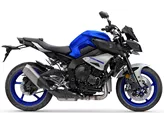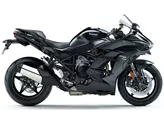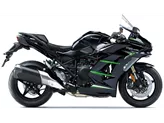Kawasaki Ninja H2 SX SE 2018 vs. Kawasaki Ninja 1000SX 2020

Kawasaki Ninja H2 SX SE 2018
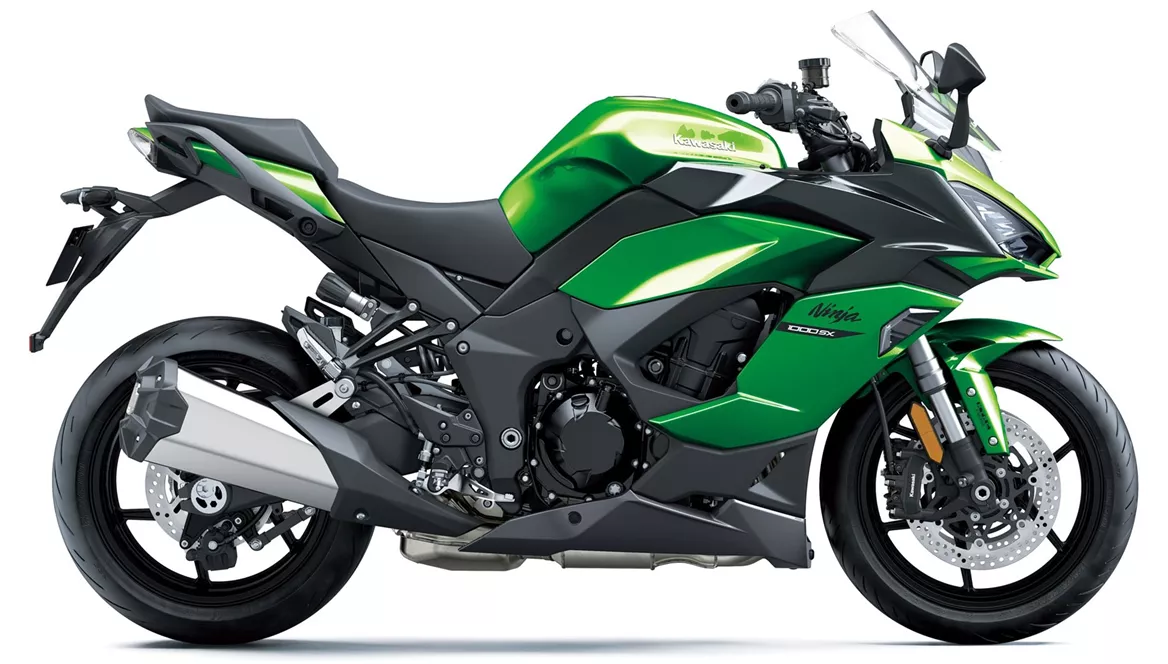
Kawasaki Ninja 1000SX 2020
Overview - Kawasaki Ninja H2 SX SE 2018 vs Kawasaki Ninja 1000SX 2020
In terms of engine specifications, the Kawasaki Ninja H2 SX SE 2018 boasts a more powerful engine with 200 HP compared to the Kawasaki Ninja 1000SX 2020's 142 HP. The H2 SX SE also has a higher torque of 137.3 Nm compared to the Ninja 1000SX's 111 Nm. Both motorcycles have a chain transmission and feature a 4-cylinder engine with a displacement of 998ccm for the H2 SX SE and 1043ccm for the Ninja 1000SX.
In terms of suspension, both motorcycles feature an upside-down telescopic fork front suspension with a travel of 120mm. The rear suspension consists of a swing arm with a monoshock, but the Ninja 1000SX has a slightly higher travel of 144mm compared to the H2 SX SE's 139mm. Both motorcycles offer adjustment options for compression, preload, and rebound.
When it comes to the chassis, the H2 SX SE features a steel frame while the Ninja 1000SX has an aluminum frame. This could potentially affect the weight and handling characteristics of the motorcycles.
In terms of braking, both motorcycles have double disk brakes at the front, but the H2 SX SE has a larger diameter of 320mm compared to the Ninja 1000SX's 300mm. Both motorcycles feature radial and monoblock technology for the front brakes. The Ninja 1000SX also has petal brakes.

Kawasaki Ninja H2 SX SE 2018
Both motorcycles come equipped with advanced rider assistance systems such as ABS, riding modes, and traction control. However, the Ninja 1000SX 2020 also offers cornering ABS, ride by wire, quickshifter, and cruise control as standard features.
In terms of dimensions and weights, both motorcycles have the same front and rear tire width and diameter. The H2 SX SE has a slightly longer wheelbase of 1480mm compared to the Ninja 1000SX's 1440mm. The seat height is also similar, with the H2 SX SE measuring at 835mm and the Ninja 1000SX at 834.98mm. The Ninja 1000SX is lighter with a kerb weight of 235kg compared to the H2 SX SE's 260kg. Both motorcycles have a fuel tank capacity of 19 liters.
In terms of equipment, both motorcycles feature LED headlights. The Ninja 1000SX 2020 also offers additional features such as LED daytime running lights, a TFT display, and an adjustable windscreen.
In terms of strengths, the H2 SX SE 2018 is praised for its powerful engine with high torque and strong pull, great brakes, and stable braking performance. It also offers pleasant traveling comfort even at high speeds and high-quality driving assistance systems. Additionally, it has a longer service interval of 12000km.
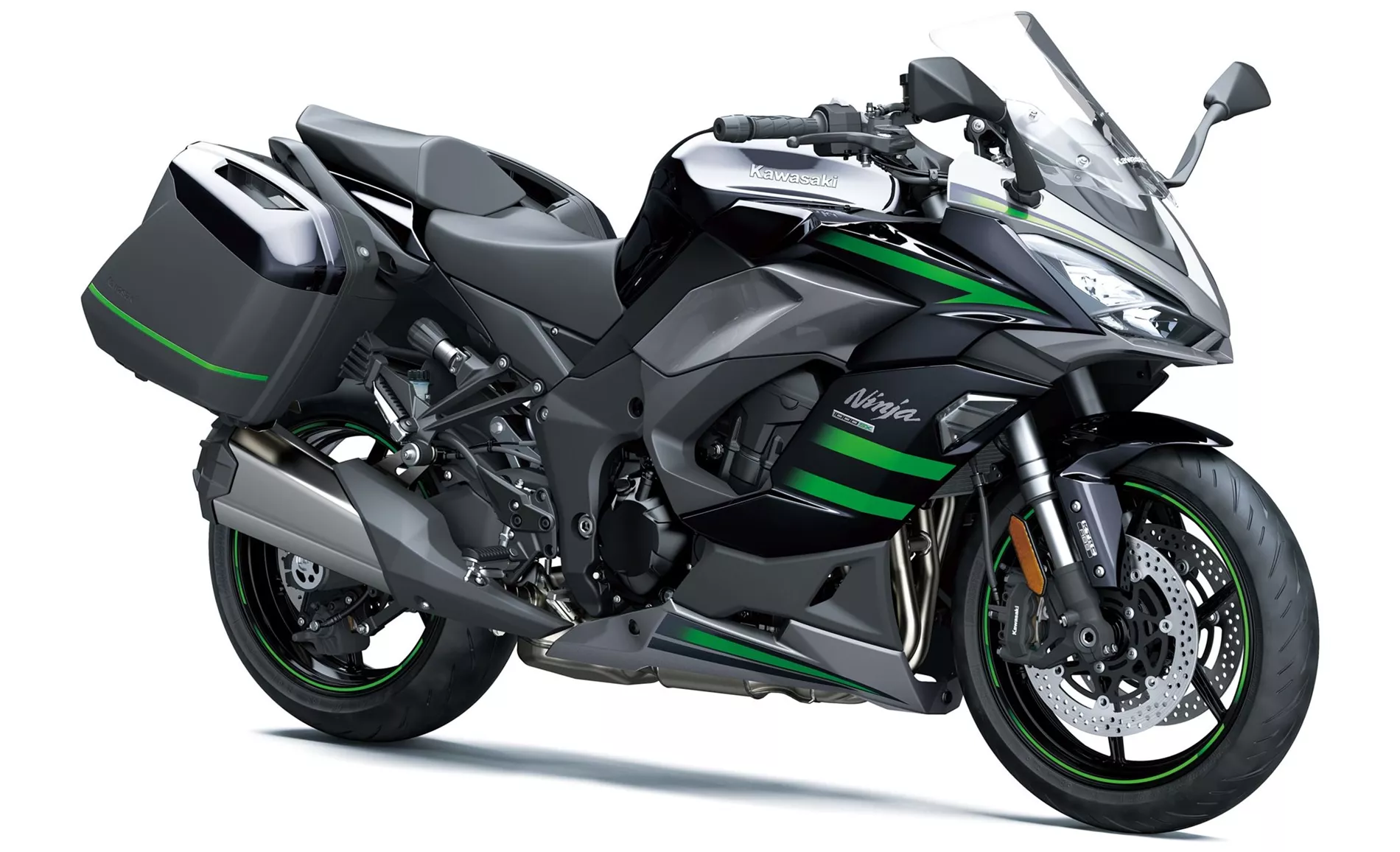
Kawasaki Ninja 1000SX 2020
The Ninja 1000SX 2020 is praised for its refined and powerful engine, balanced handling, comfortable chassis, and sufficiently comfortable seating position. It also has a modern look, good brakes, and features LED lights all around. The inclusion of a color TFT display and cruise control as standard are also notable strengths.
As for weaknesses, the H2 SX SE 2018 is criticized for its slightly fiddly heating handle control and the lack of an electronic chassis, which could enhance its universal character.
The Ninja 1000SX 2020's only weakness mentioned is that the windshield can only be adjusted with both hands and not with tools.
Overall, both motorcycles offer impressive features and performance, but the H2 SX SE 2018 stands out with its higher power and torque, while the Ninja 1000SX 2020 offers a more refined and comfortable riding experience with additional modern features.
Technical Specifications Kawasaki Ninja H2 SX SE 2018 compared to Kawasaki Ninja 1000SX 2020
Pros and Cons in comparison
Pros and Cons in comparison
Kawasaki Ninja H2 SX SE 2018

Kawasaki turns the H2 into a fascinating sports tourer. The H2 SX is a new motorbike and, apart from the supercharger and the striking front end, has virtually nothing in common with the fearsome H2 and H2 R. It offers great comfort and shines with the familiar and universal virtues of a sports tourer. It offers great comfort and shines with the familiar and universal virtues of a sports tourer. On top of that, you enjoy breathtaking acceleration.
Kawasaki Ninja 1000SX 2020
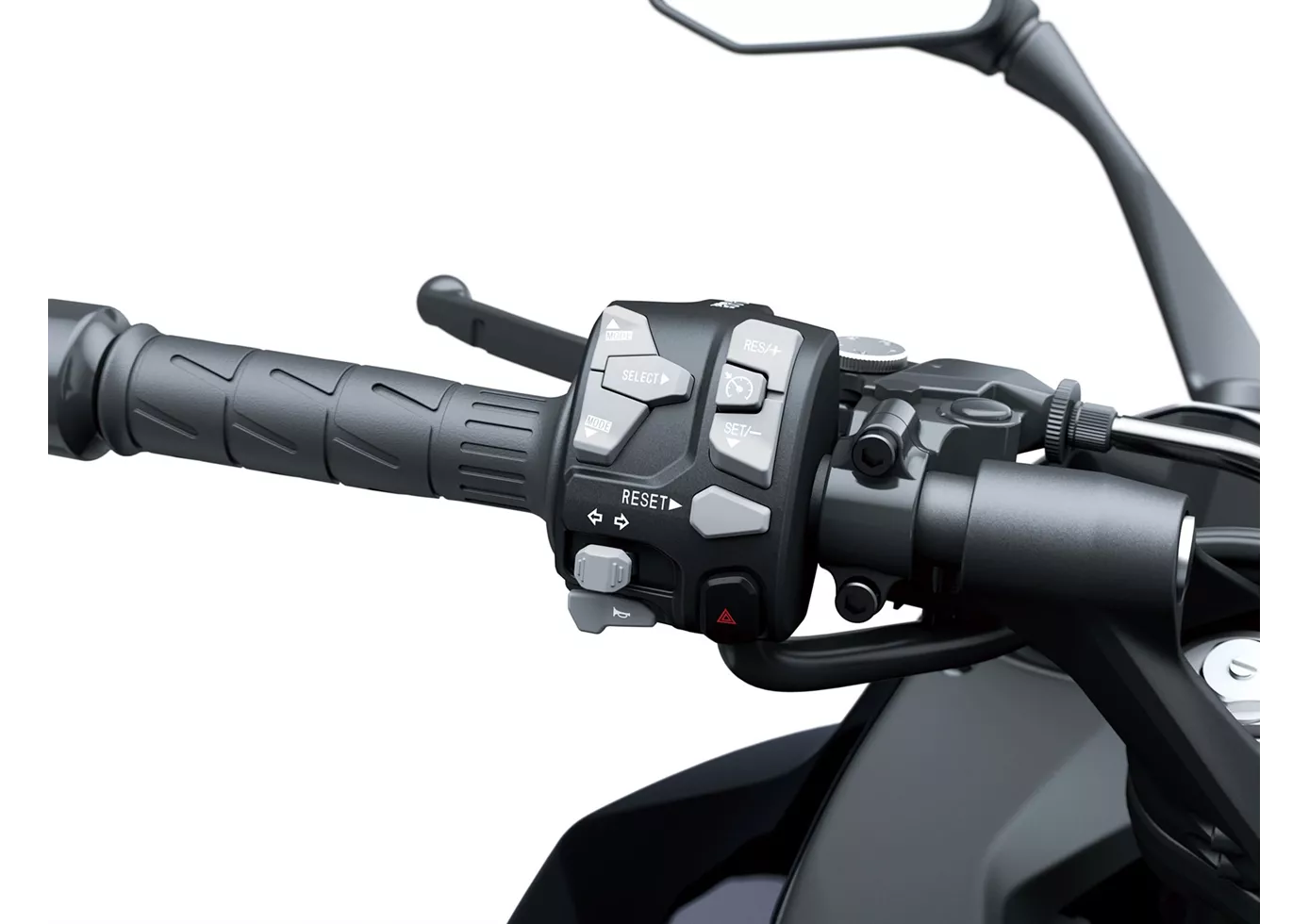
The Kawasaki Ninja 1000SX is more evolution than revolution - but what is the point of reinventing everything in a balanced sports tourer? But the new name is definitely justified, with the many new features made possible by the Ride-by-Wire system, among others, the sports tourer is absolutely up to date. Cornering ABS, modern traction control and riding modes provide safety and adjustment options to personal preferences, the shift assistant favours sport as well as touring. What's more, the price is hot (at least in Austria)!
Price Comparison Avarage Market Price Kawasaki Ninja H2 SX SE vs Kawasaki Ninja 1000SX
There are a few key differences between a Kawasaki Ninja H2 SX SE 2018 and a Kawasaki Ninja 1000SX 2020. In terms of price, the actual average price of a Kawasaki Ninja H2 SX SE 2018 is about 63% higher. There are the same number of bikes of both models available on the 1000PS.de marketplace, specifically 10. It takes less time to sell a Kawasaki Ninja 1000SX with 83 days compared to 225 days for the Kawasaki Ninja H2 SX SE. Since model year 2018 1000PS.de editors have written 14 reviews for the Kawasaki Ninja H2 SX SE and 13 reviews for the Kawasaki Ninja 1000SX since model year 2020. The first review for the Kawasaki Ninja H2 SX SE was published on 11/7/2017 and now has more than 35,700 views. This compares to more than 40,500 views for the first review on Kawasaki Ninja 1000SX published on 11/5/2019.

